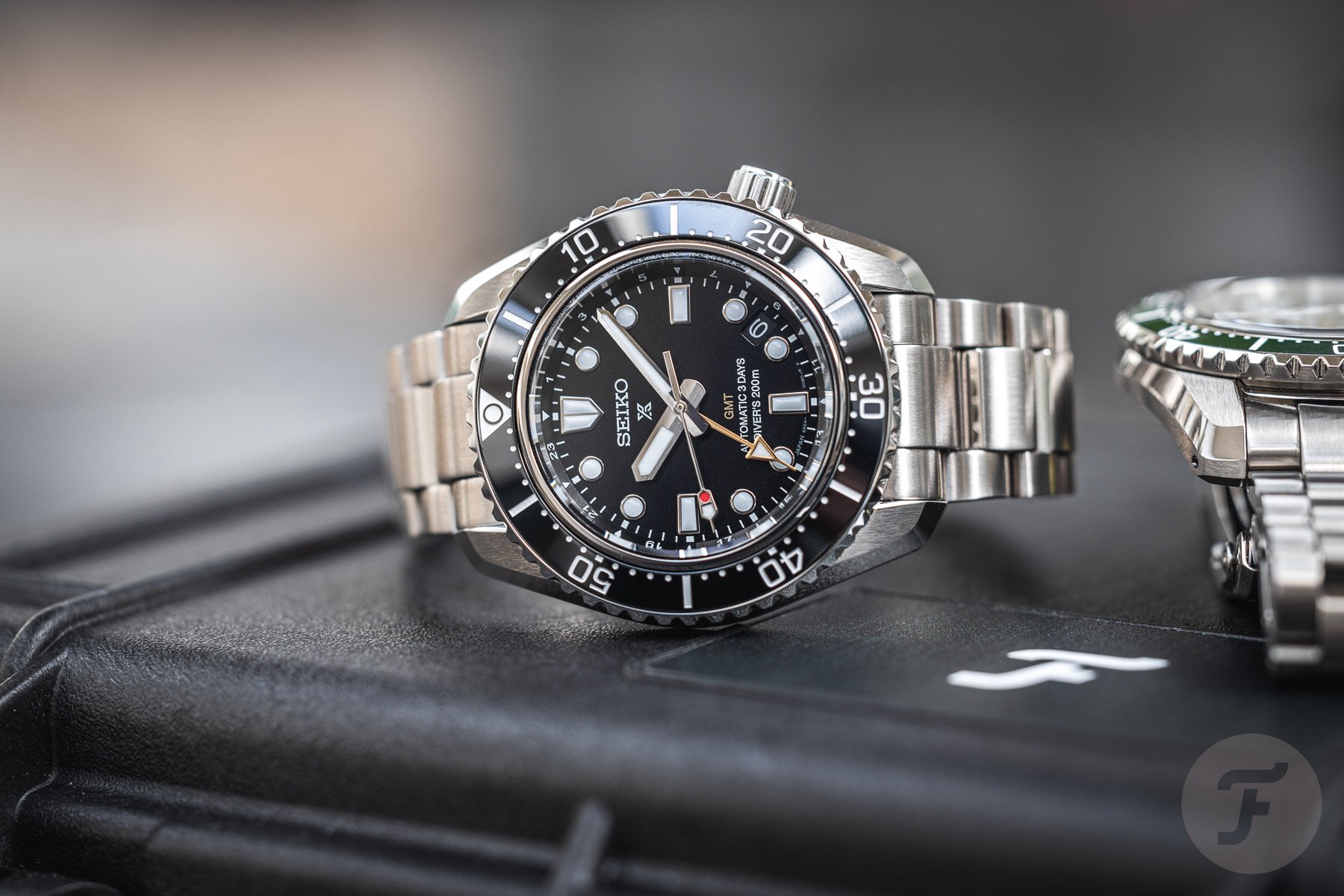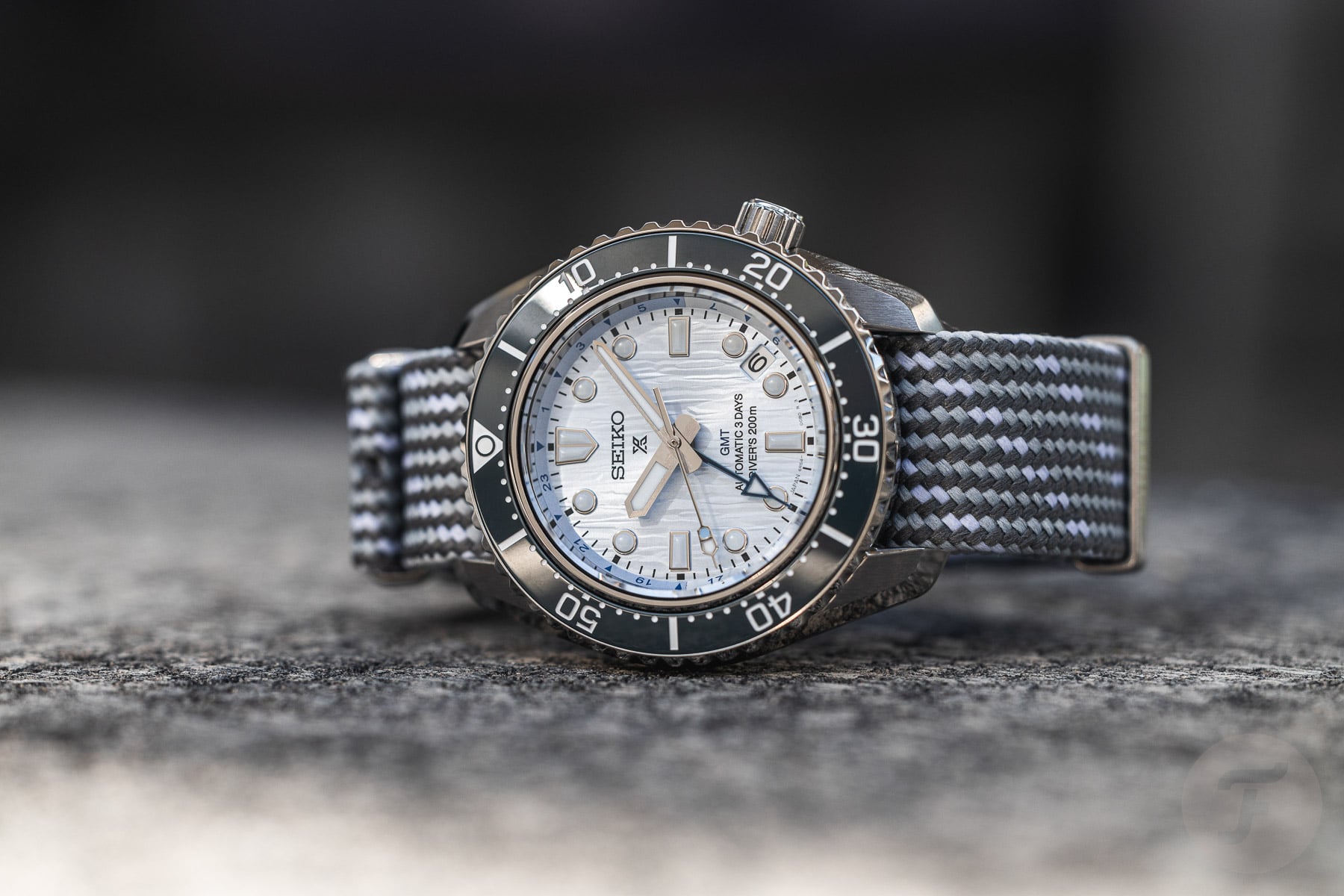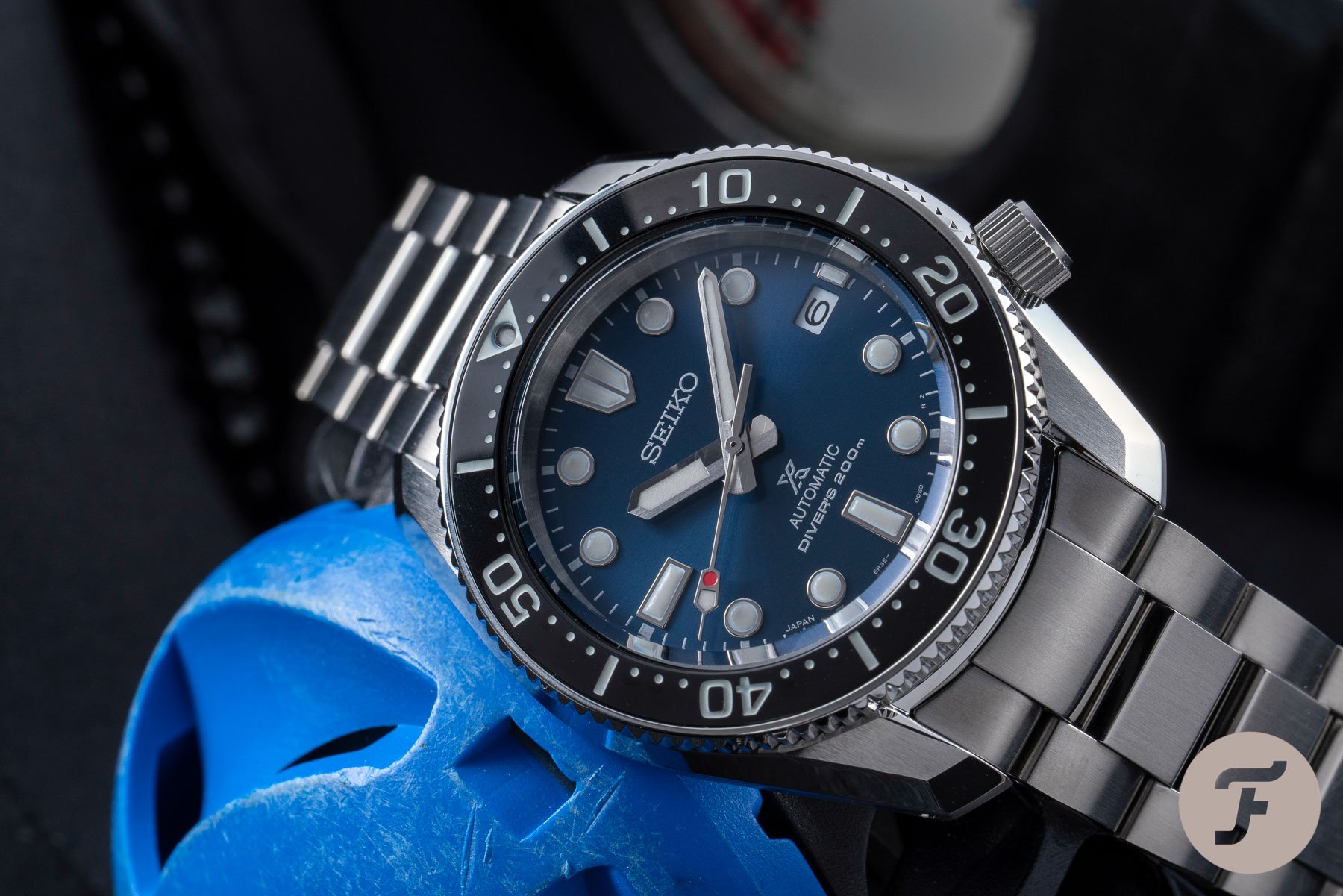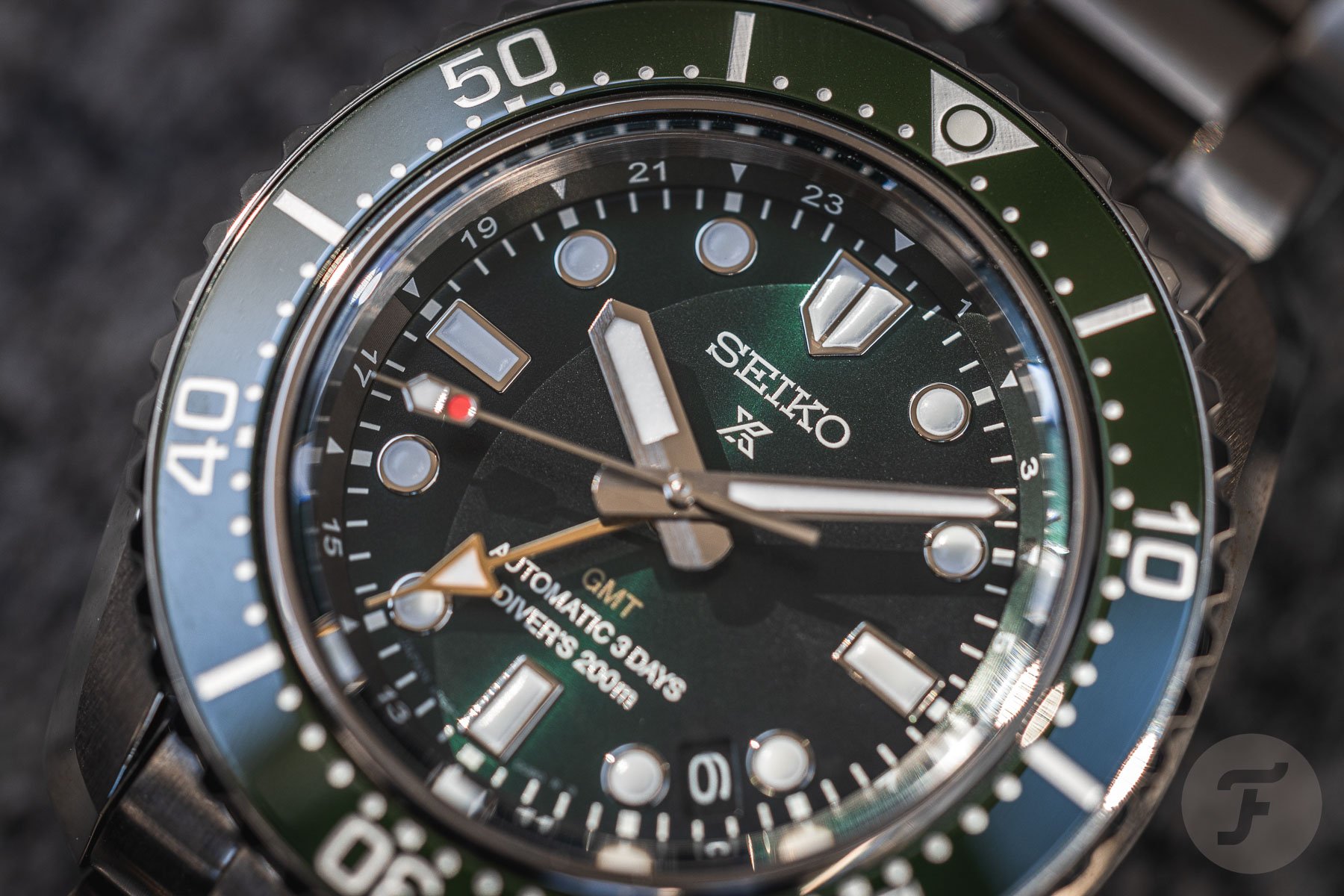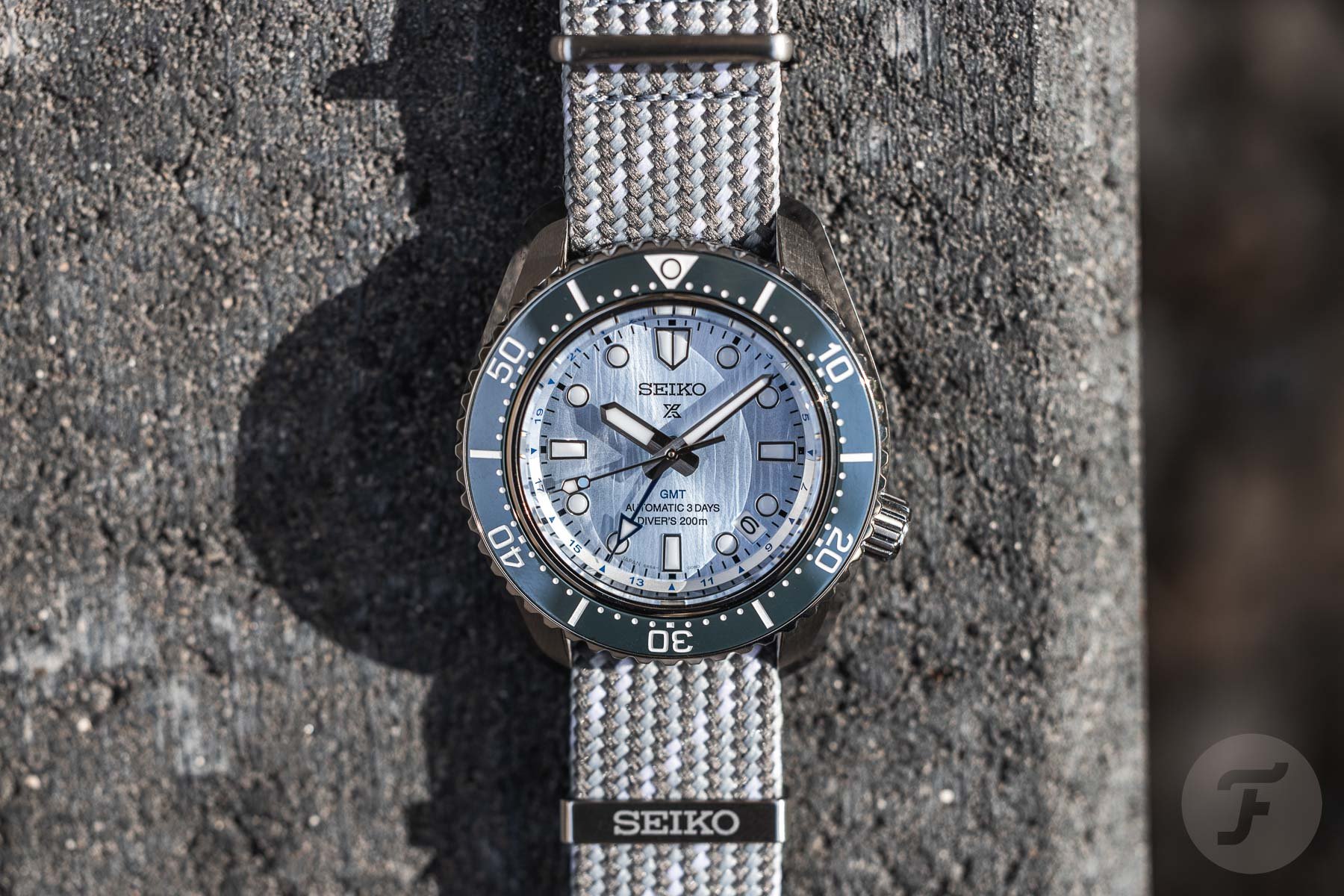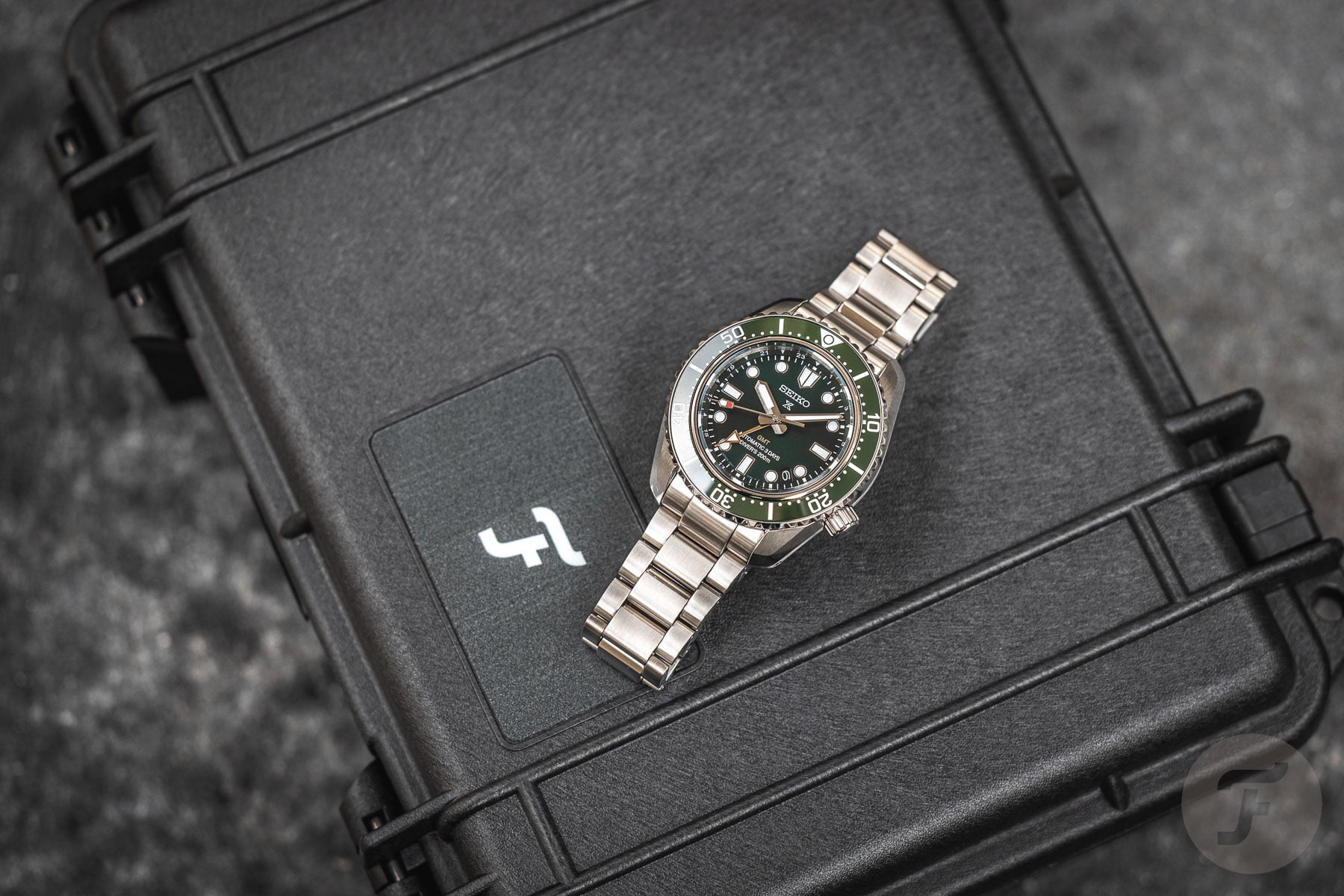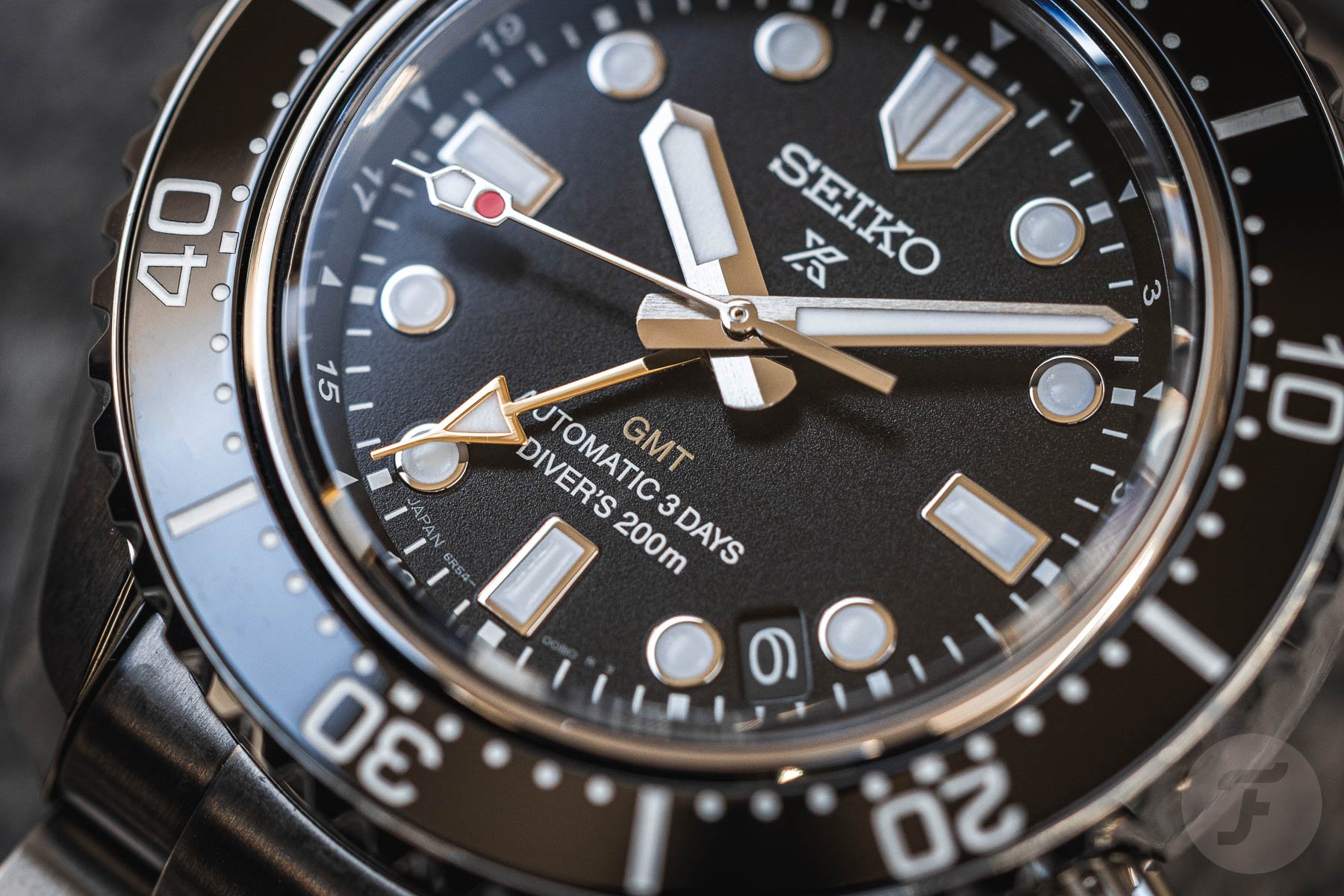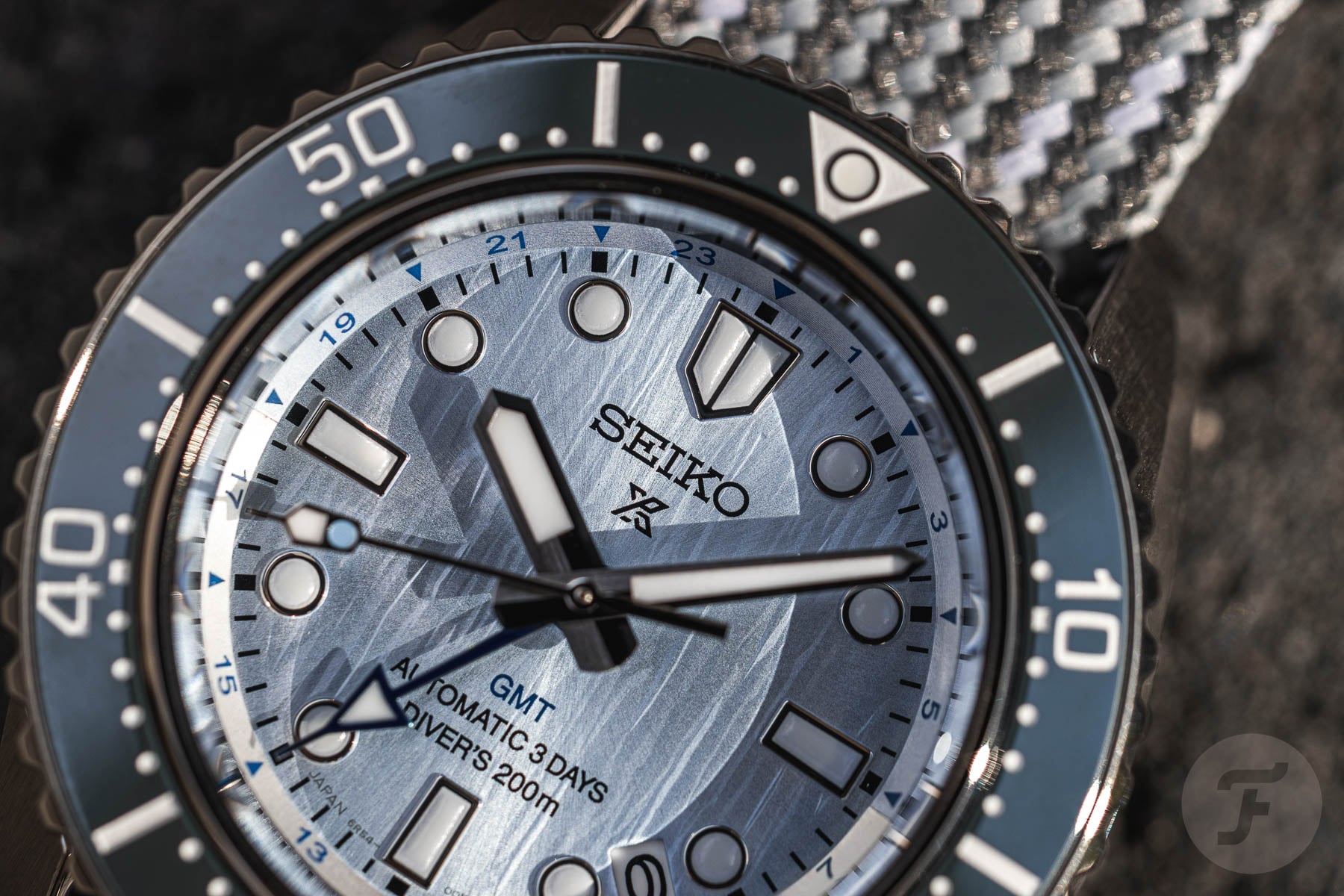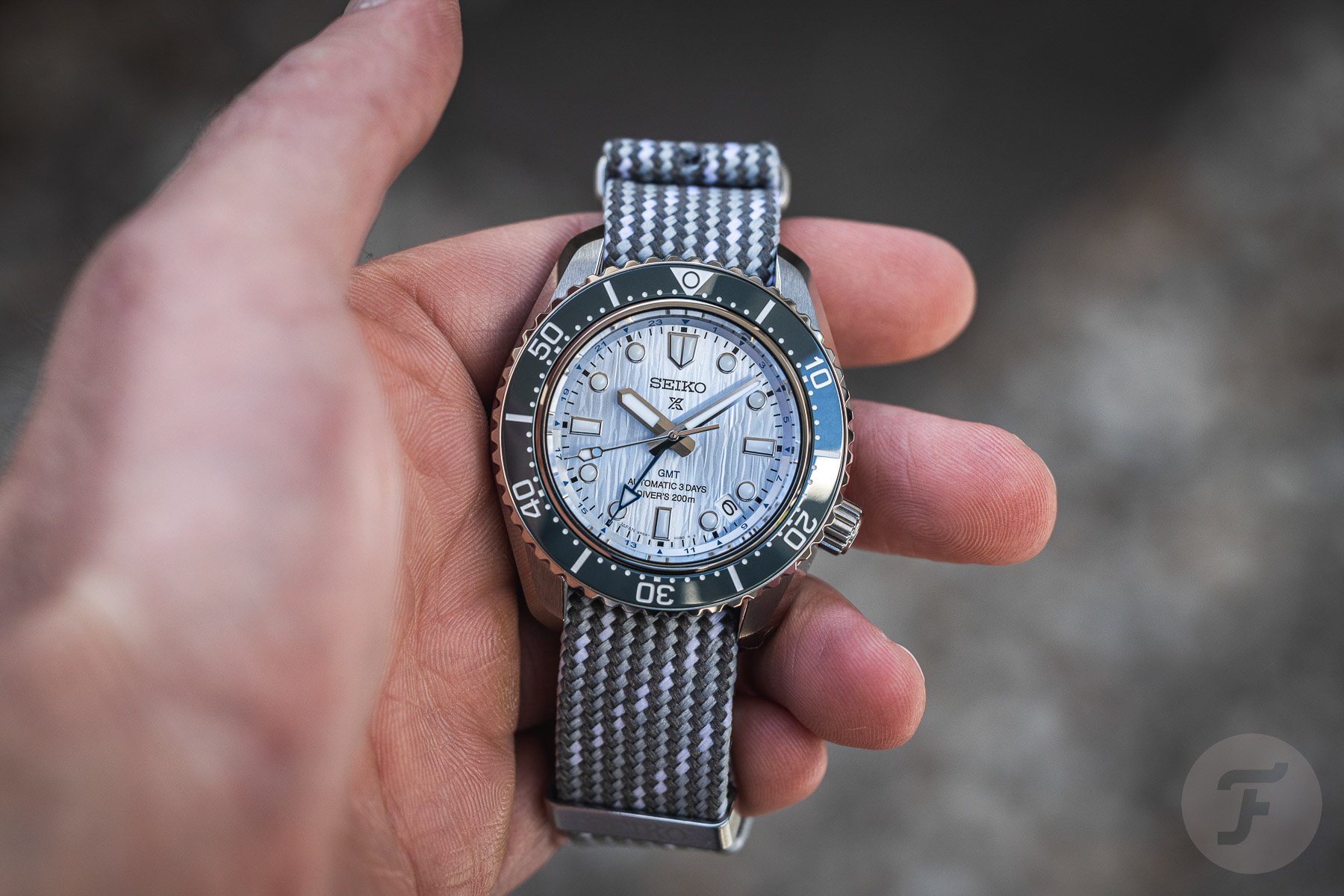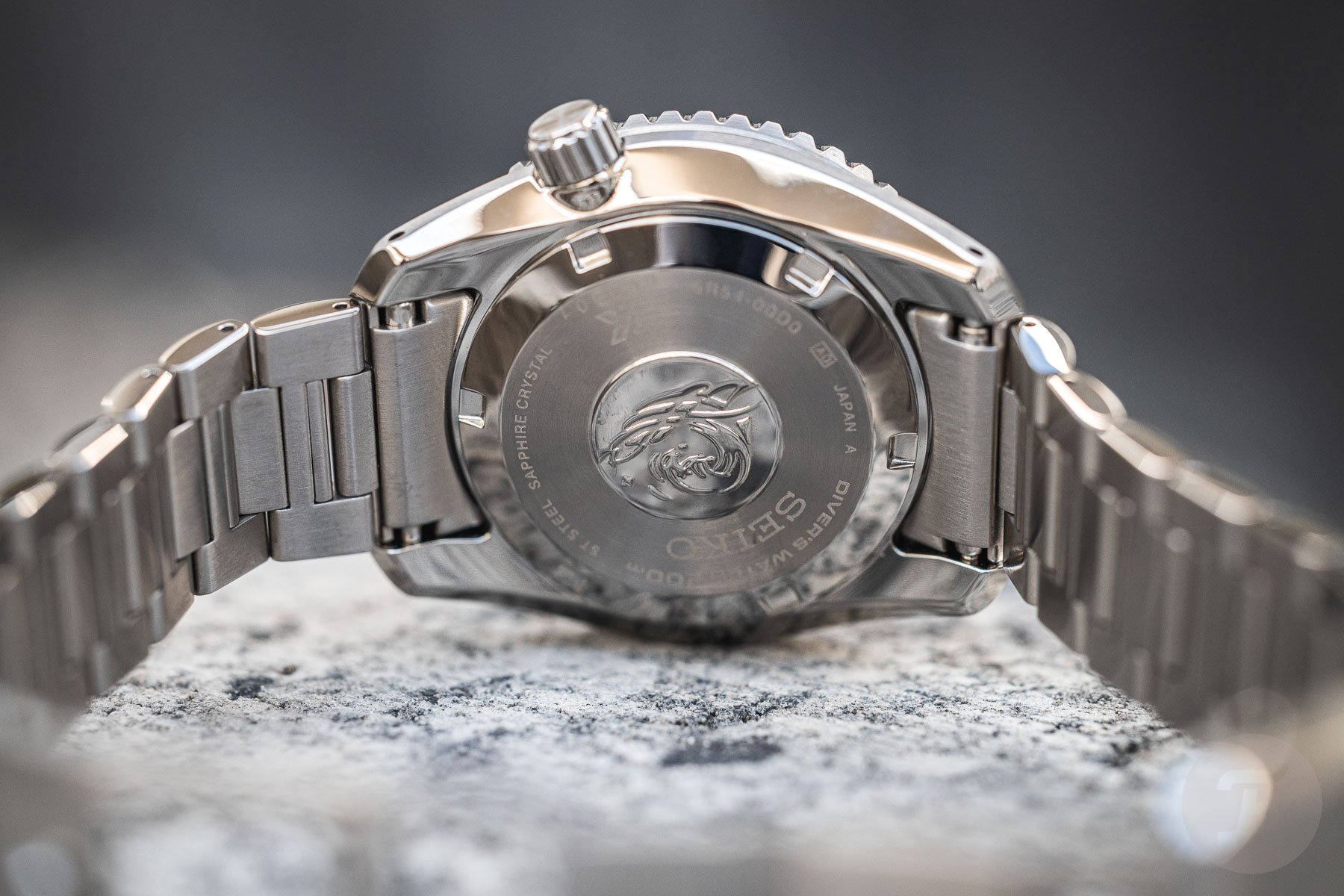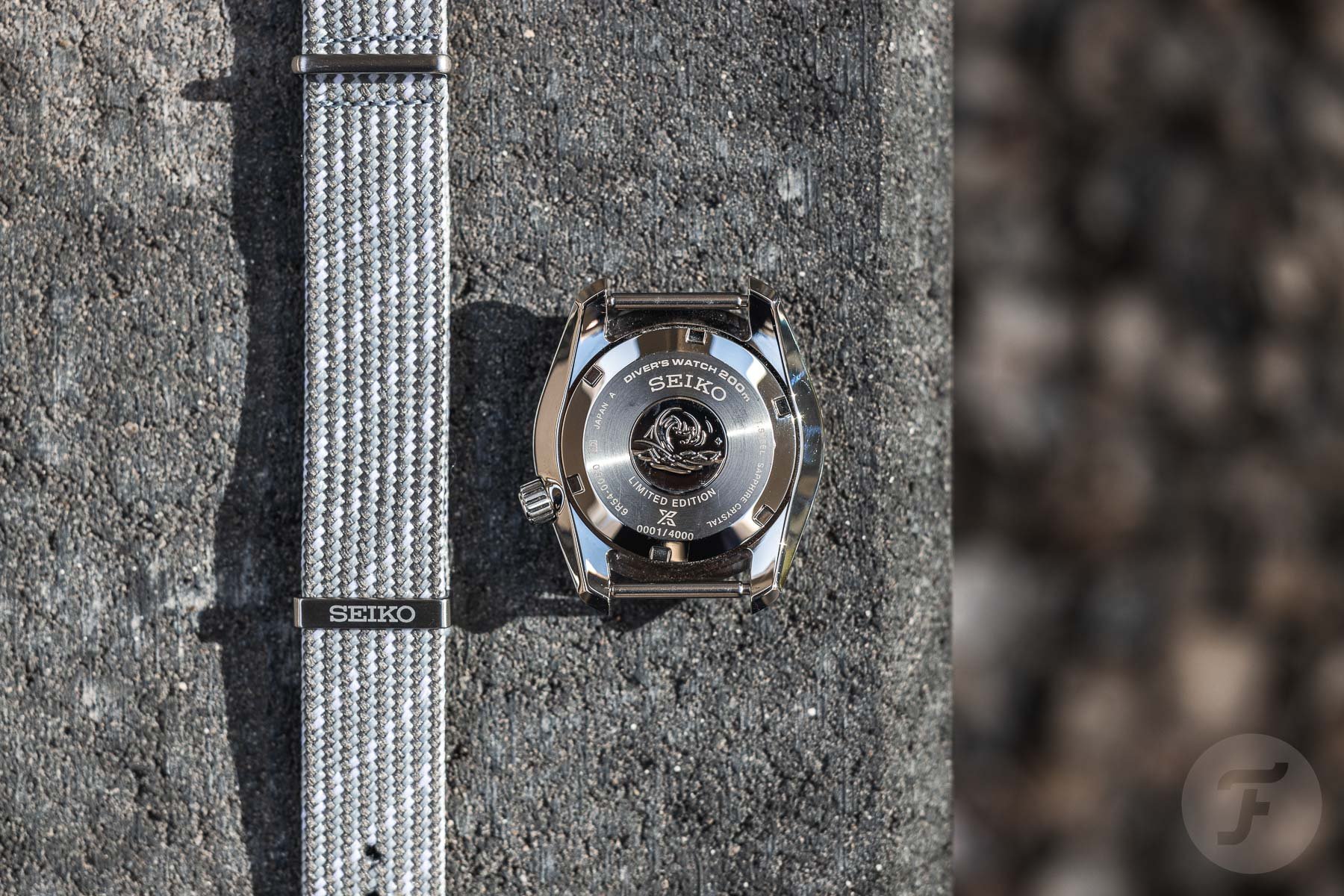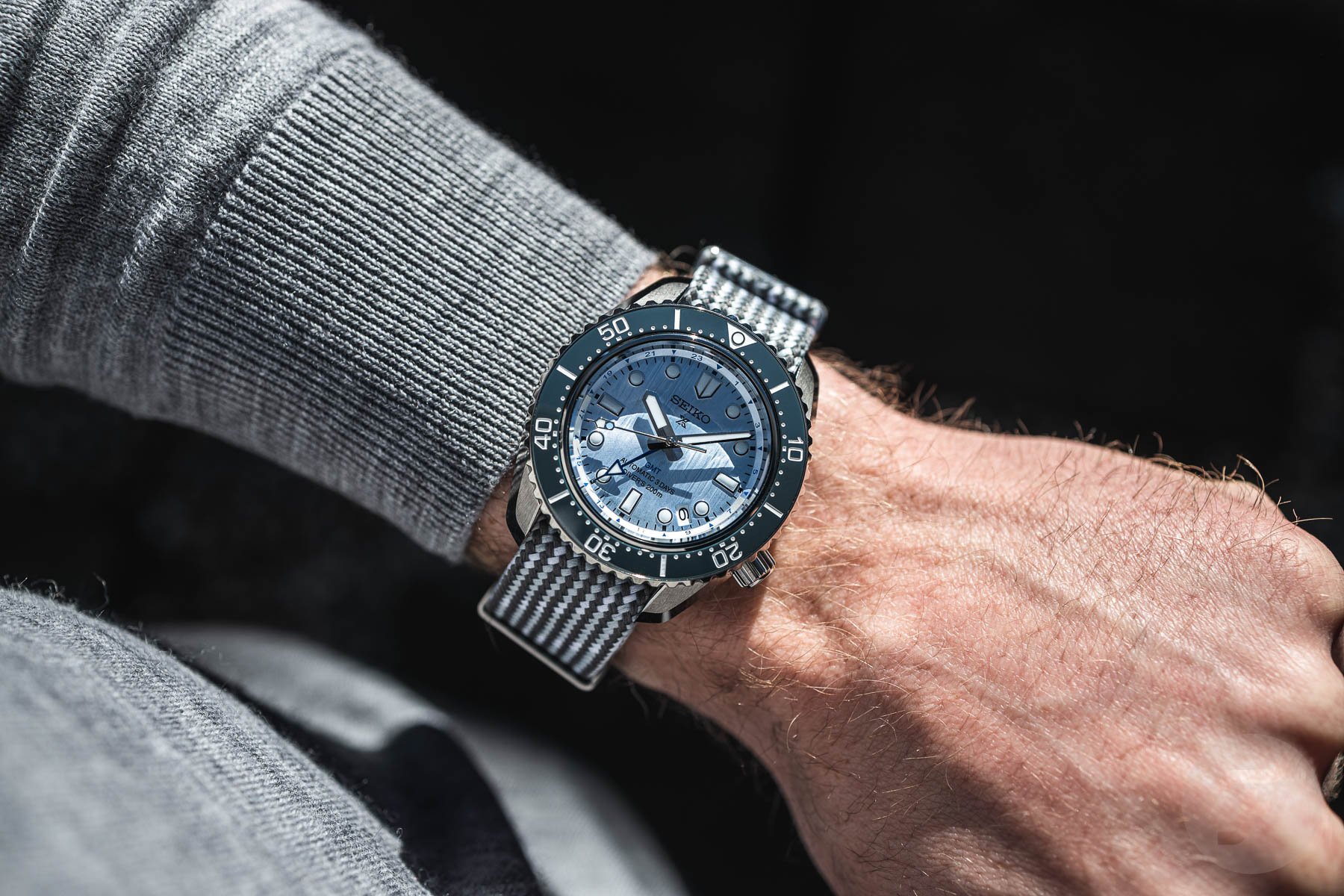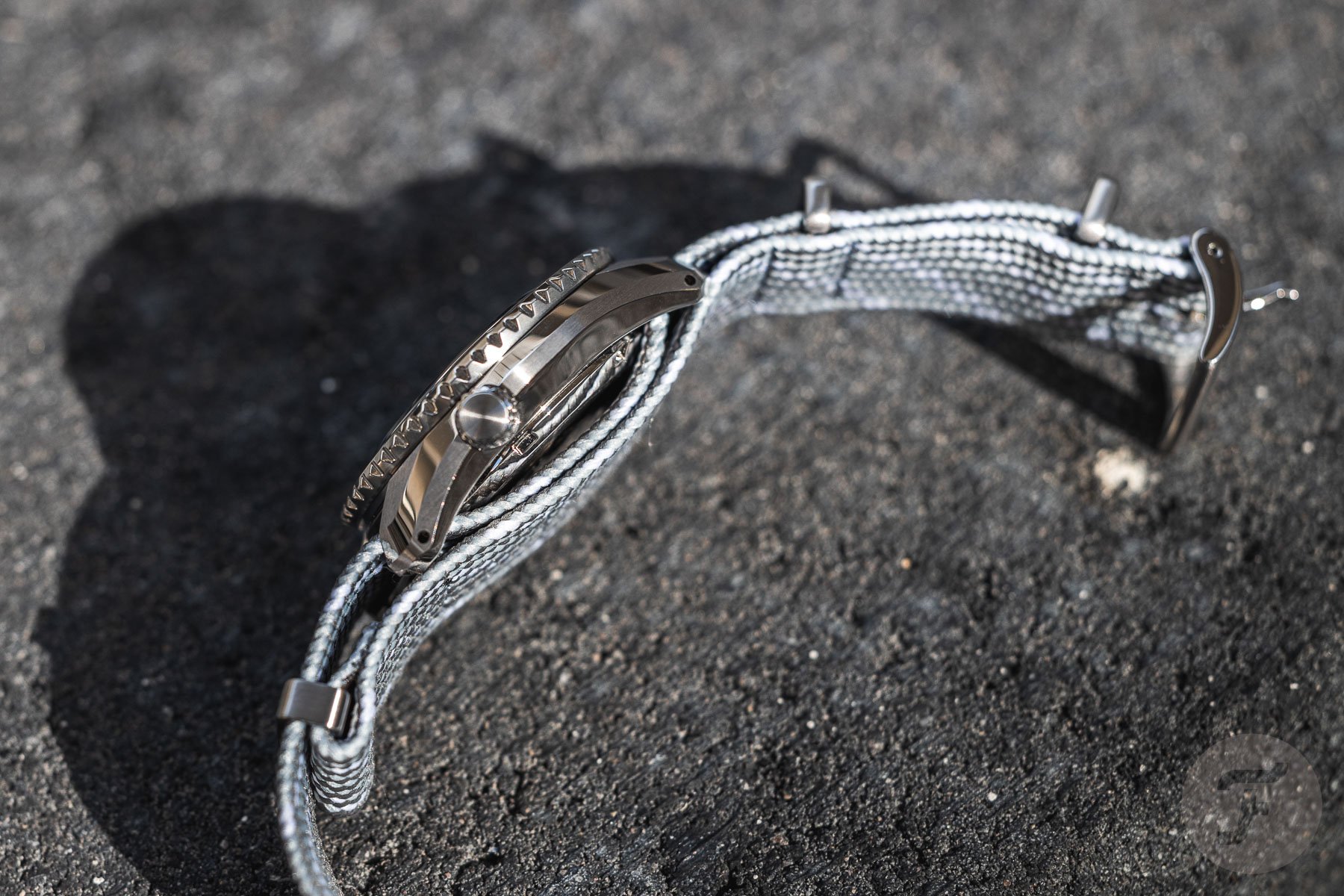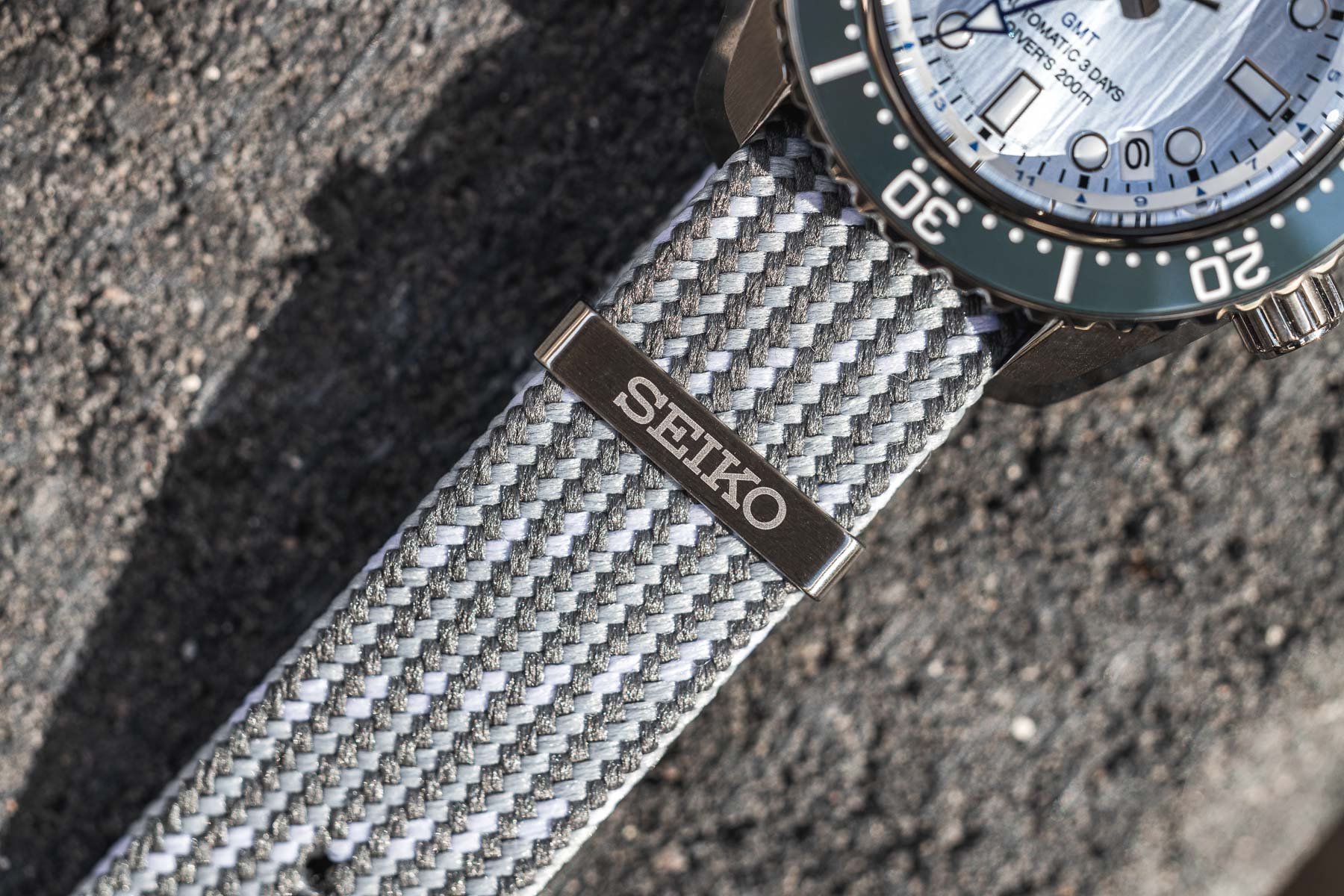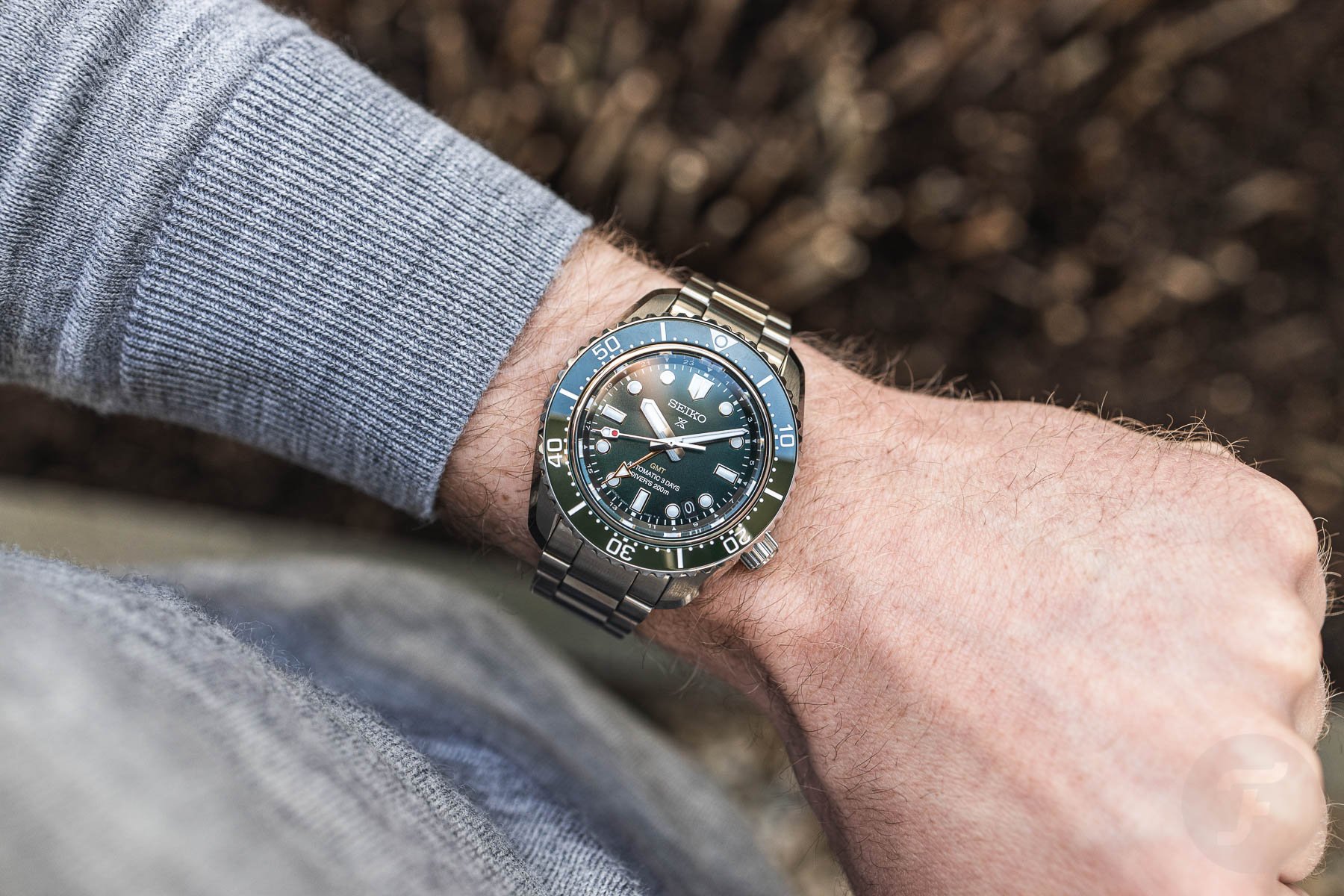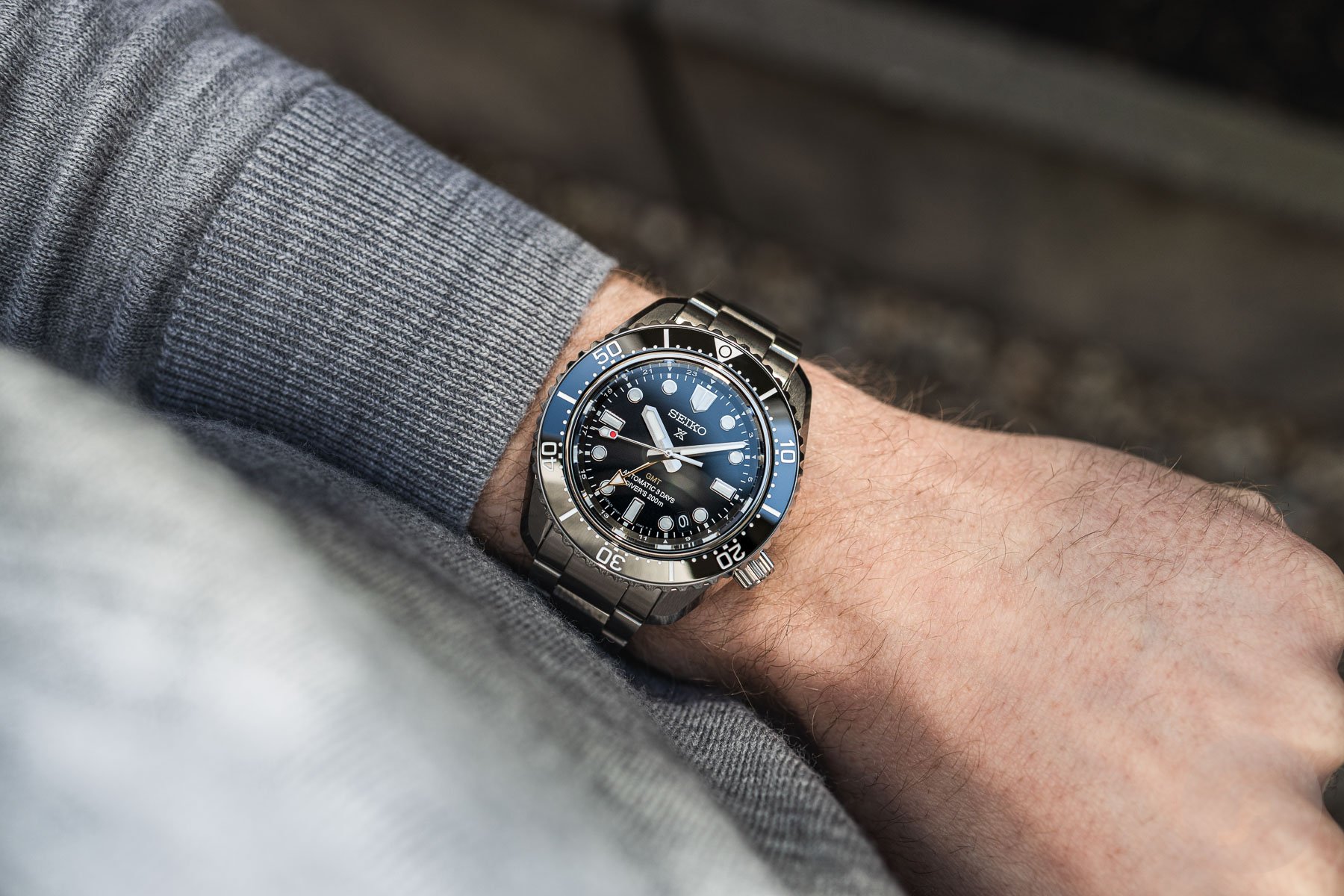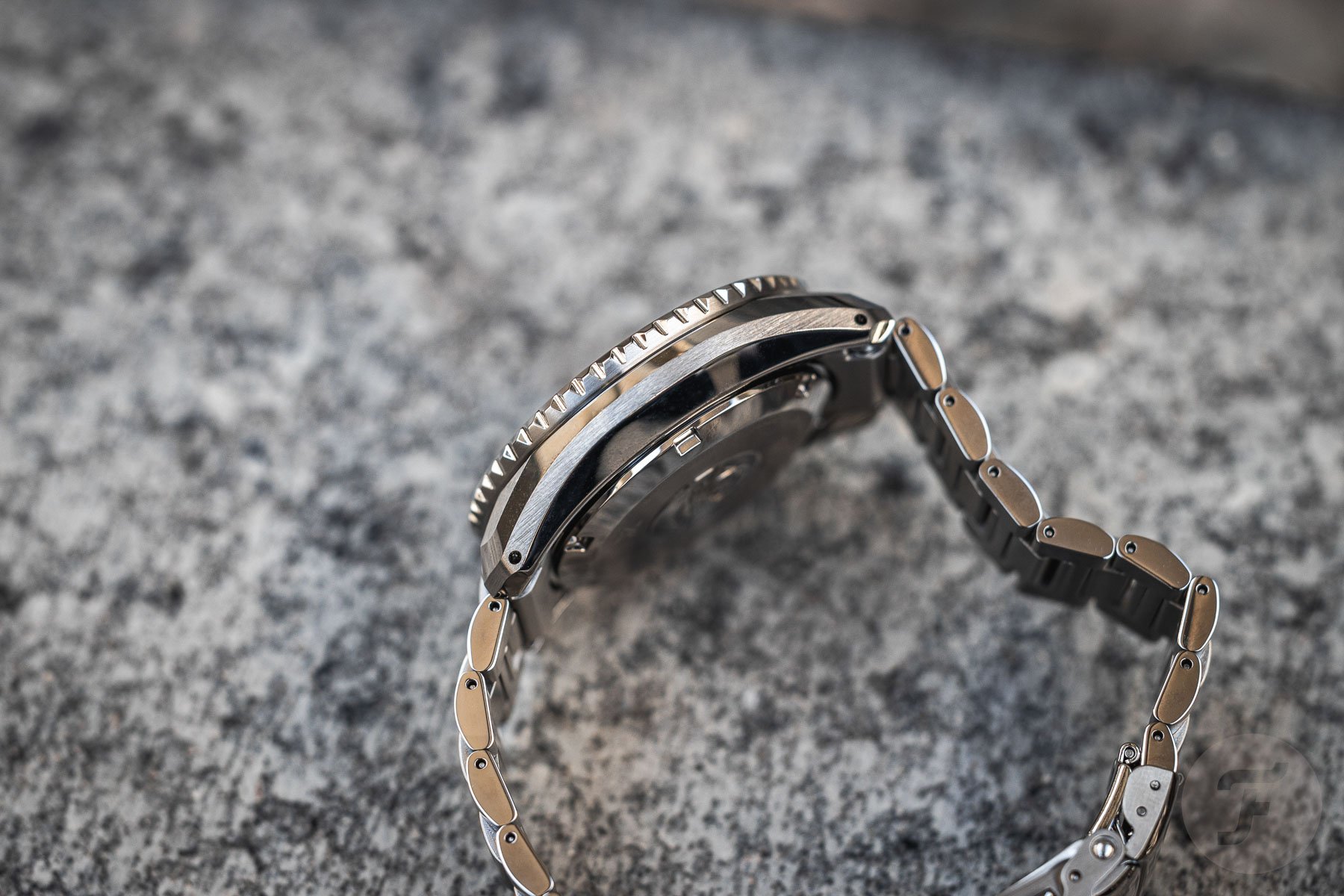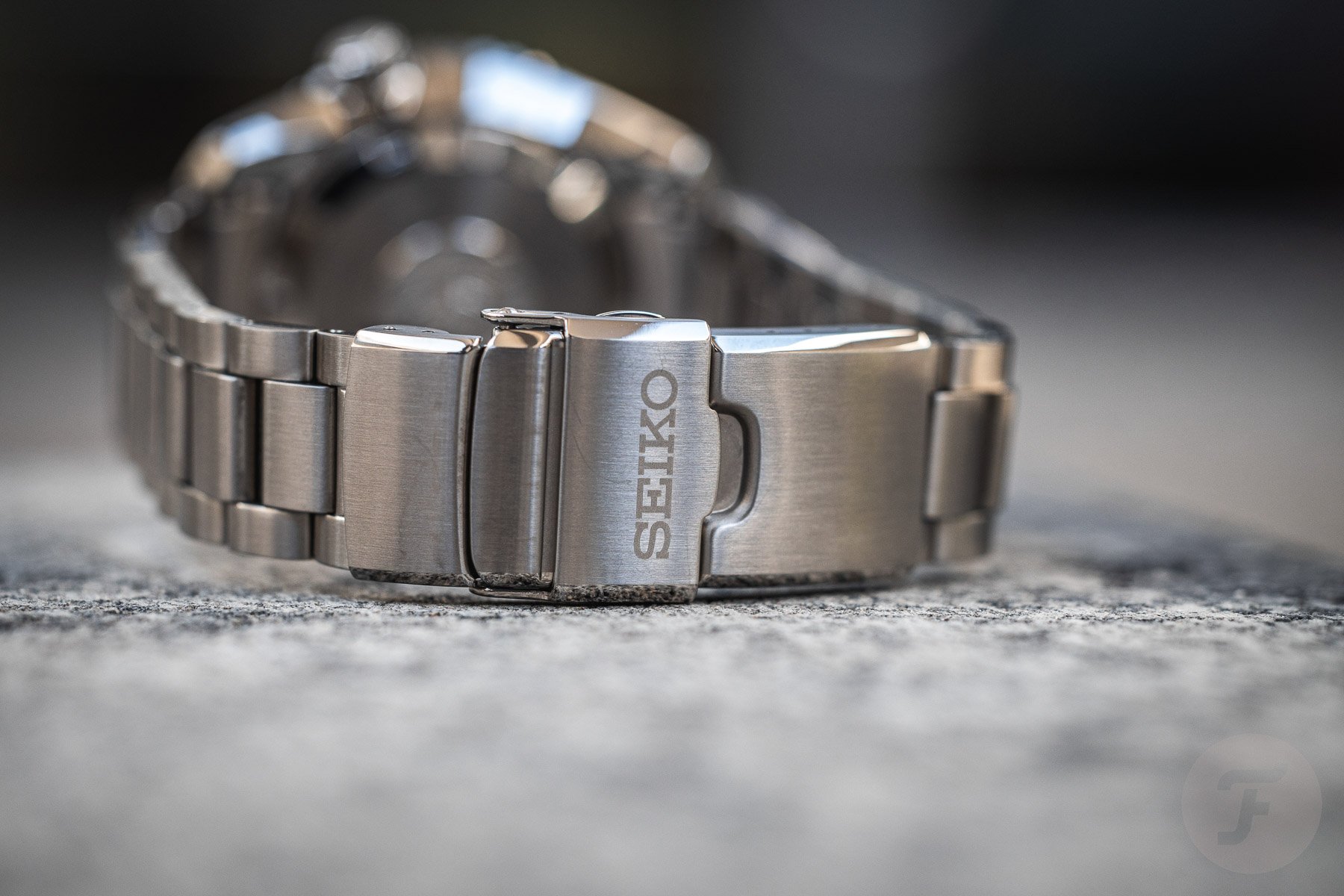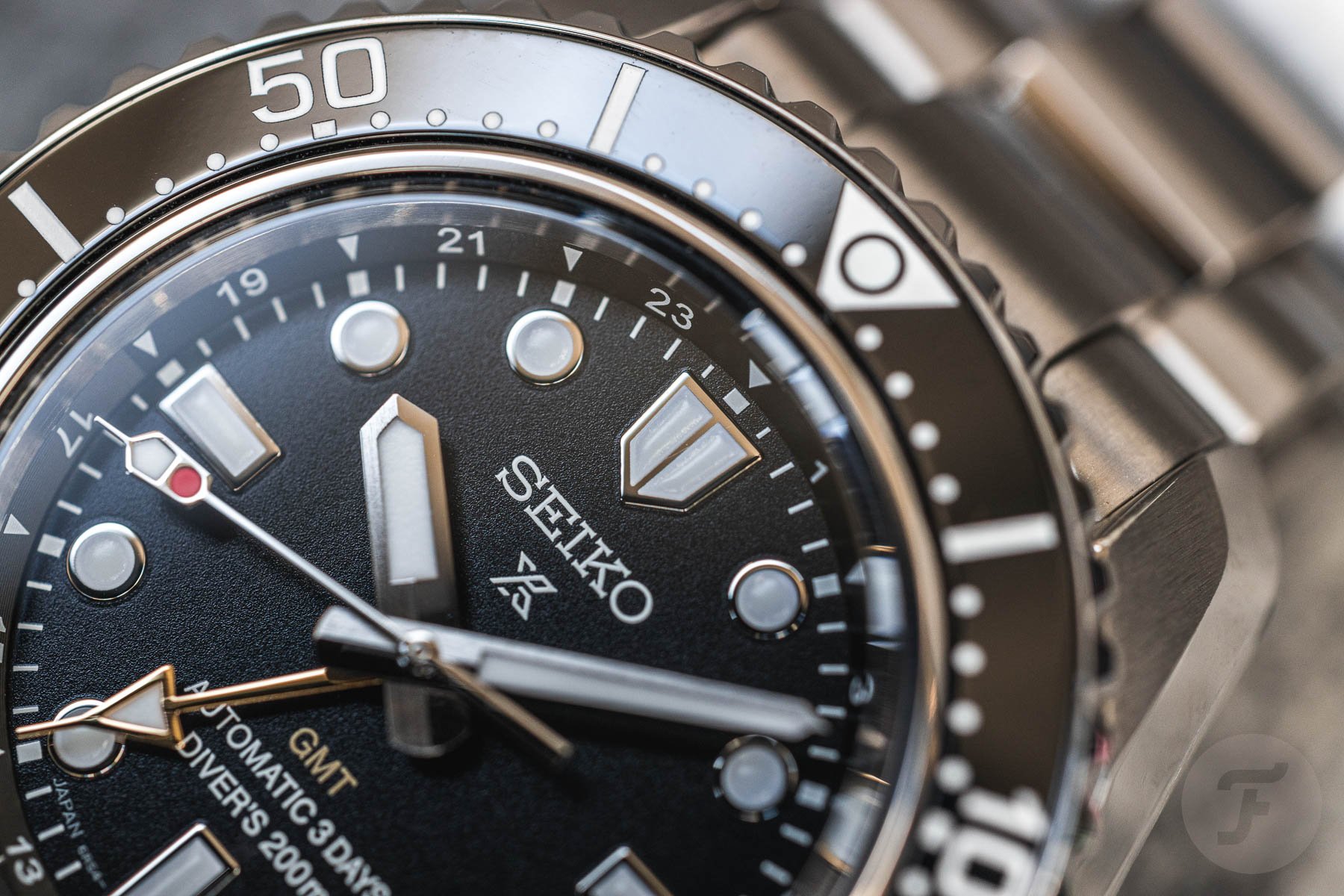Hands-On With The Seiko Prospex SPB381, SPB383, And SPB385 GMT Dive Watches
Sometimes wishes do come true. It sounds a bit cliche and over the top, but it’s not in this case. In March, Seiko unveiled its first series of mechanical Prospex GMT dive watches — the SPB381, SPB383, and SPB385. They are three GMT versions of the 1968 Diver’s Modern Re-interpretation, and as I wrote in the introduction article, I was looking forward to taking them for a spin. Now, a few months later, that wish has been granted. I was curious to find out more for several reasons. Most of all, it was the simple joy of seeing the great aesthetic combined with the practicality of a GMT function. What more could you possibly need?
The answer to that simple question is not as simple. So many factors are at play nowadays when it comes to picking the right watch. As some of you might know, I have developed a strong passion for GMT watches over the past couple of years. The GMT complication is my favorite because it offers great practicality and aesthetics that create a unique category of watches. And with the new Prospex SPB381, SPB383, and SPB385, Seiko took a less commonly trodden path, creating GMTs that are dive watches first and foremost.
Prospex dive watches with a GMT function
It’s a choice that makes sense. While the Prospex line does not consist of just dive watches anymore, they are what made the Prospex name what it is today. Consequently, the dive watches have a prominent place in the collection, and if Seiko were ever to add complications to them, doing so should not affect the timepieces’ character. That’s why these three new GMT versions of the 1968 Diver’s Modern Re-interpretation are dive watches first and GMT watches second. While this approach is not truly unique, it’s not something we see very often.
A GMT dive watch does not take on the characteristic GMT aesthetic with its 24-hour bezel, often executed in two colors to indicate night and day. Instead, a GMT diver sports the regular 60-minute dive bezel and integrates the 24-hour GMT scale on dial or rehaut. Examples that come to mind are the Mido Ocean Star GMT, the Omega Seamaster Planet Ocean 600M GMT “Deep Black,” or the Bremont Supermarine S302 GMT. These show that integrating the GMT complication into dive watches can lead to great-looking dual-purpose timepieces.
The 1968 Diver’s Modern Re-interpretation
Regarding the looks of the Prospex SPB381, SPB383, and SPB385, it’s hard not to recognize the Seiko diver lineage. As I said in my introduction article for these three models, I love the look of the 1968 Diver’s Modern Re-interpretation. It instantly conjures up associations with Seiko’s iconic debut professional dive watch and the Marinemaster. This little brother of the brand’s flagship diver has been popular with fans from the moment it was introduced in 2020. As I eluded to in the introduction article, the SPB185, and SPB187 come to mind when I see these new GMT versions.
Those watches look instantly recognizable and captivating. I particularly love the SPB187 with its equally classy and sporty blue dial and black bezel. For the three new GMT models, Seiko decided to keep it a bit more straightforward by aligning the dial and bezel colors. The two regular models, the SPB381 and SPB383, have matching green and black dials and bezels, respectively. As a result, they look even closer to the Marinemaster than the regular models. The third model is the SPB385, a special Save The Ocean limited edition with an ice-blue dial.
The specs of the SPB381, SPB383, and SPB385
To refresh our memories, let’s go over some of the basic specs. All three watches come with a 42mm stainless steel case measuring 12.9mm thick, 48.6mm long, and 20mm between the lugs. The watches are water resistant up to 200 meters and come with a ceramic bezel insert and a stainless steel bracelet with a folding clasp, a security lock, and a diving extension. This makes them capable divers that are on par with their non-GMT peers in the Prospex line. And what I also love about these watches is that they are on the smaller side for Prospex divers.
For a long time, Prospex divers were known to be big, and some still are. The Sumo is 45mm, the Marinemaster is 44.3mm, and the Turtle comes in at 45mm. With the introduction of several smaller models, Seiko has given many fans their long-awaited reward. The 40.5mm SPB143 and the 41mm SPB317 have become instant fan favorites, partly because of their smaller size. At 42mm, these new models are still substantial, but they look and wear very well. The GMT models are 0.4mm thicker than the regular versions, but the overall proportions of the watches are great.
Integrating the GMT complication
Seiko slightly altered the new models’ design to integrate the GMT function. But what remained is that beautiful overall aesthetic. My favorite elements of the case are the chunky, angular lugs. They remind me of the legendary 6215-7000/1 and the 6159-7000/1. Seeing how the case design still feels modern and relevant is astounding. Sure, Seiko updated the design to fit modern tastes, but the overall silhouette is still the same.
To make the GMT scale work, Seiko made the bezel slightly slimmer and the dial somewhat larger. This freed up the space to integrate the 24-hour GMT scale nicely on the rehaut. At first glance, all three models look like dive watches, and that’s the point. The main element “betraying” the GMT function is the large arrow-tipped hand, not the rather subtle 24-hour scale. It’s very easy to read the second time zone when needed, but it does not interfere with reading the local time or the remaining dive time on the bezel. I think it’s a design job very well done.
Two regular models and a special limited edition
When it comes to the different versions, the black and green ones stand out because they integrate the GMT elements nicely in color. Both the green and black dials work well with the gold-colored hand and “GMT” text on the dial. The 24-hour indicators are in white, so they perfectly blend in with the other elements. They include numerals for the uneven hours and triangles for the even hours.
The third model is the special Save the Ocean Limited Edition SPB385. This one commemorates the 110th anniversary of Seiko’s first wristwatch, the famous Laurel. Seiko will produce a limited run of 4,000 pieces of this model. It immediately pops thanks to its ice-blue dial, which really surprised me. In real life, the depth of the color and the texture of the dial is a lot more impressive than I first imagined from the press images. It’s very lively in the sunlight, and the GMT scale is printed in blue on an almost-silvery background for the right contrast.
The new Seiko caliber 6R54
All three watches house the brand-new Seiko caliber 6R54. This in-house automatic GMT movement operates at 21,600vph and delivers 72 hours of power reserve. The new 6R54 allows you to set the 24-hour GMT hand independently. This makes the movement a caller GMT rather than the more in-demand flyer GMT. For some, that might be a dealbreaker as more and more brands are offering a flyer GMT for the €1,700 that the regular models in this series cost. I would much prefer a flyer GMT, but I would reconsider that if the watch in question looks absolutely amazing. The reality is that I do not travel enough to make it an absolute must-have. Rather, it’s more of a nice feature to have.
The movement hides underneath the solid steel case back. All three models have the same general design here, although the limited-edition model also indicates its status as such and has a unique number out of 4,000 engraved. The Save the Ocean Limited Edition SPB385 also comes with a gray NATO strap alongside the stainless steel bracelet.
Wearing the Prospex SPB381, SPB383, and SPB385
This brings us to the question of how these watches feel on the wrist. Let’s start with the SPB385 limited edition. As mentioned, it comes with an extra NATO strap, which is what we received our press sample on. The thick strap is made from recycled plastic bottles and was created using the traditional Japanese Seichu braiding technique. What I love about the strap is that it is sturdy and perfectly balances out the watch on the wrist. It also looks fantastic and fits the watch’s overall aesthetic very well.
Out of all three models, the limited edition was initially my least favorite. However, after having worn it for a while, I can say that the watch has a lot of charm. The double-pass NATO strap does make for a thicker-wearing watch. I didn’t mind it too much, but that’s also because I usually prefer my watches on a bracelet.
I might change it up in the summer with a colorful NATO strap, and that’s exactly what this limited edition offers with its bracelet and strap option. While it is an ice-blue dial, it could easily be a great summer watch. Bring it with you to your summer destination with the strap and the bracelet, and you’re good to go.
Wearing the regular SPB381 and SPB383 models
Out of the three, though, I’d lean toward the green- or black-dial variant. And after trying both, I was most impressed by the black SPB383. However, I must add that it’s a close call. Overall, the contrast of the gold-colored GMT hand is greater on the black-dial version. On top of that, I love the combination of black and gold, so I naturally gravitate toward that combination. But I must say that the green version has quite a bit of charm too.
The shade of green is nicely chosen and rather vibrant. In the sunlight, it becomes a lighter green, whereas, in darker conditions, it is a nice, dark shade. Some other details stood out to me too. As I mentioned previously, the date window is between 4 and 5 o’clock, while the crown is slightly above the 4 o’clock position. I was apprehensive about whether these elements would bother me or not. But I have to say that the date window blends in perfectly with all the other elements. As for the crown, it does not align with the hour marker, and that might throw some people off. When wearing the watches, it didn’t bother me, but I would understand if people have a problem with it.
Overall impressions of the Seiko Prospex SPB381, SPB383, and SPB385
On the wrist, these three watches feel quite sturdy indeed. The bracelet was a positive surprise as it is comfortable and far better than some of the bracelets from Seiko’s past. The clasp is the one element that I feel Seiko could work on to make this bracelet quite a bit better. But as the brand has improved its standard of bracelets over time, I have hope that Seiko will also do so with the clasps.
You already know that the black version is my favorite, but each of the three models is attractive in a unique way. And regardless of your choice, especially in the sun, the mix of brushed and polished surfaces makes for more than just a utilitarian tool watch. As I said, the limited-edition SPB385 would be a nice summer watch, while the other two models are classy divers that look great in a variety of situations. As previously mentioned, the regular SPB381 and SPB383 are available for €1,700. The Save the Ocean limited edition SPB385 is available for €1,900.
Final thoughts
I love these additions to Seiko’s Prospex lineup. The new movement is a great step toward more GMT options on the more expensive side of the Seiko collection. These three models are a great step in that direction. But it must be said that there is some stiff competition at this price point, especially with brands that offer a flyer GMT rather than this caller GMT. Nevertheless, these watches are very well made, are incredibly comfortable, and are smaller than most GMT divers. That’s why I believe that they are simply great timepieces.
So will one of them become my GMT watch? While I adore the black SPB383, as it turns out, I love my divers and my GMTs better separately. But that’s purely a personal preference. If you love a great GMT diver, these three watches are superb, and I’m sure they will quickly find their way to fans. If you ask me, these three new models are valuable additions to the popular Seiko Prospex line.
For more information, visit the official Seiko website. Let us know in the comments section which of the three models is your favorite.
This is a preferred-position post. Learn more.

